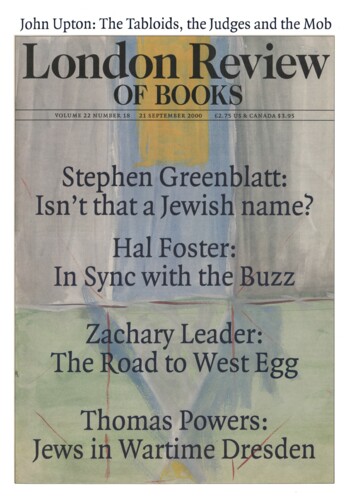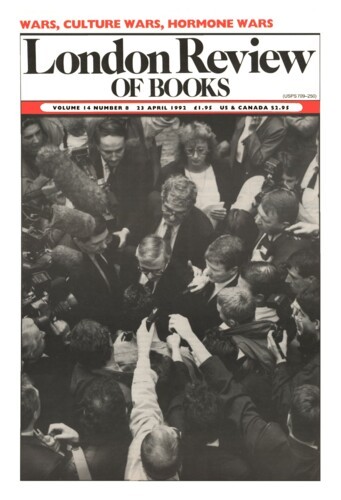Teeth of Mouldy Blue: Percy Bysshe Shelley
Laura Quinney, 21 September 2000
The poems in this volume will not persuade anyone to care for Shelley who does not do so already: they are often bad, sometimes dreadful, juvenile works which Shelley wrote between the ages of 17 and 22. These years, from 1809 to 1814, were the most chaotic of his life; he tried to make his own fate but succeeded chiefly in precipitating a series of disasters. His behaviour alternated between defiance and misgiving. In 1810 Shelley went to Oxford, where he met and beguiled Thomas Jefferson Hogg, and languished over his rejection by his cousin Harriet Grove, who was frightened by the unorthodoxy of his ideas; he was soon sent down for co-authoring, with Hogg, ‘The Necessity of Atheism’ (though he wavered about acknowledging his authorship of the pamphlet); he broke with his family, and fell into a depression; in his loneliness, he persuaded Harriet Westbrook, a pleasant young woman, to elope with him, and then established an unsatisfactory triangulated household with her older sister, Eliza; they wandered about, visiting, among other places, Ireland, where Shelley tried to foment revolution; he fled Harriet and Eliza, partly on the grounds that they were intellectually unsympathetic; he sought a mentor and father substitute in William Godwin, and then alienated him by eloping with his daughter, Mary; he discarded Harriet and their two small children, and in 1816 she drowned herself. His actions were reckless, destructive and poignantly venturesome; they had consequences which darkened his life to the end.‘


